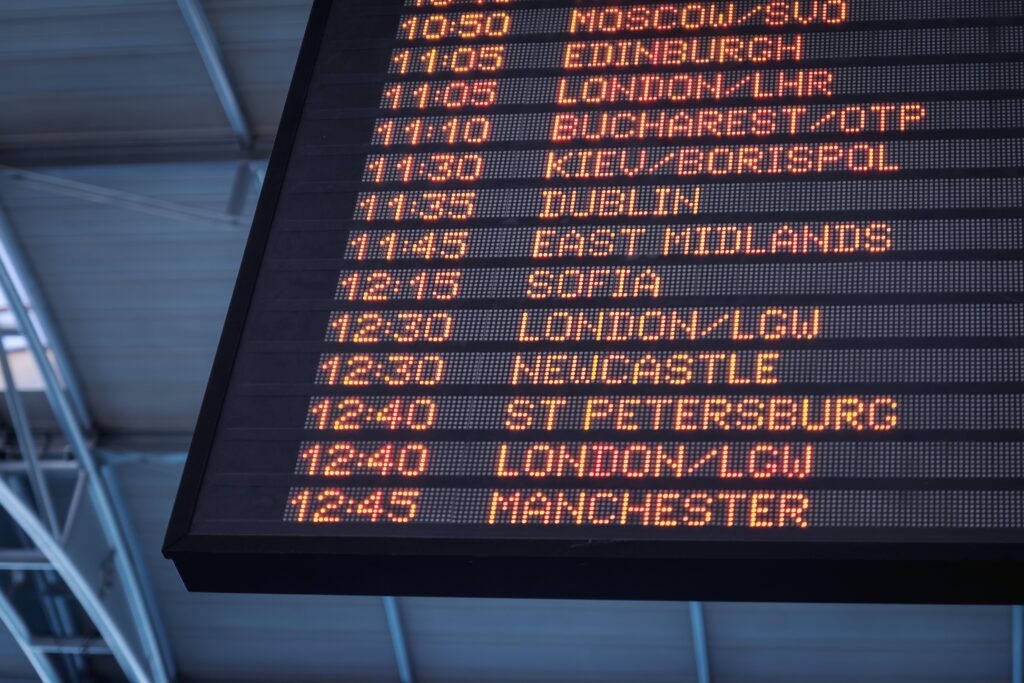Bolivia Transportation Guide
Bolivia Transportation Guide: Navigate diverse landscapes with buses, collectivos, and reputable taxis. Altitude-awareness for highlands, and explore the scenic routes.


Bolivia Transportation Guide – International Airports
Bolivia has three international airports:
El Alto International Airport (LPB) in La Paz, which is the highest international airport in the world at an altitude of 4,061 meters (13,325 feet).
Viru Viru International Airport (VVI) in Santa Cruz de la Sierra, which is the largest airport in Bolivia and serves as a hub for several airlines.
Jorge Wilstermann International Airport (CBB) in Cochabamba, which is the third-busiest airport in Bolivia and serves as a hub for Boliviana de Aviación, the country’s national airline.
National Airports
Bolivia has several national airports that serve domestic flights within the country. Some of the major national airports in Bolivia include:
Alcantarí International Airport (CIJ) in Uyuni
Capitán Oriel Lea Plaza Airport (TJA) in Tarija
El Trompillo Airport (SRZ) in Santa Cruz de la Sierra
Jorge Henrich Arauz Airport (TDD) in Trinidad
Juana Azurduy de Padilla International Airport (SRE) in Sucre
Juan Mendoza Airport (ORU) in Oruro
Puerto Suárez International Airport (PSZ) in Puerto Suárez
Tte. Av. Jorge Henrich Arauz Airport (GYA) in Guayaramerín
Yacuiba Airport (BYC) in Yacuiba
These airports provide access to different regions and attractions throughout Bolivia.
Bolivia Transportation Guide – Trains
Bolivia has a limited train network, but there are still some interesting train journeys that can be taken in the country.
The most famous train journey in Bolivia is the Andean Explorer, which runs between Puno in Peru and Cusco in Bolivia, passing through the stunning Andean landscape, including Lake Titicaca, the highest navigable lake in the world.
Another popular train journey is the Wara Wara del Sur, which runs between the cities of Oruro and Villazón, passing through the spectacular Andean scenery of the altiplano. The train has both first and economy class carriages, and is a popular way to see the countryside.
There are also local train services that operate between different cities and towns in Bolivia, but these are less comfortable and less reliable than the long-distance tourist trains.


Bolivia Transportation Guide – Buses
Buses are the most common mode of transportation in Bolivia, and there are many bus companies that operate throughout the country. The buses vary in quality, from basic minibuses to more luxurious coaches with air conditioning and comfortable seats.
Some of the major bus companies in Bolivia include:
Trans Copacabana
Todo Turismo
Cruz del Norte
Trans Titicaca
El Dorado
Trans Salvador
Trans Línea
Diana Tours
Flota Copacabana
Trans Omar
It’s important to note that while buses are a popular mode of transportation, the roads in Bolivia can be quite challenging, especially in more remote areas. Travelers should be prepared for long journeys and consider their comfort and safety when choosing a bus company. It’s also recommended to book tickets in advance, especially during peak travel times.
Links of interest
Airlines:
Ride-Sharing:
Buses:
Trains:


We recommend
Bolivia travel tips
Our guide offers essential Bolivia travel tips and insights for an unforgettable journey. Plan your trip with us!
Bolivia Transportation Guide – SIM Cards
For travelers in Bolivia:
Providers:
Entel, Tigo, Viva are major providers.
Prepaid SIMs:
Available at airports, kiosks, and official stores.
Documents:
Passport may be required for registration.
Coverage:
Good in cities; rural areas may have limited coverage.
Data Plans:
Choose a plan based on data needs.
Top-Up:
Recharge at kiosks, stores, or through apps.
Unlock Phone:
Ensure your phone is unlocked for a Bolivian SIM.
Emergency Numbers:
Dial 110 for police, 118 for medical emergencies.
Validity:
Plans may be valid for days or weeks.
Internet Speed:
Generally good; varies in remote areas.
Currency Converter
Currency Converter EUR/USD: Sat, 19 Apr.
Unit Converter
Bolivia Transportation Guide – Maps
What map do you need?
Choose your destination
More information about this country






